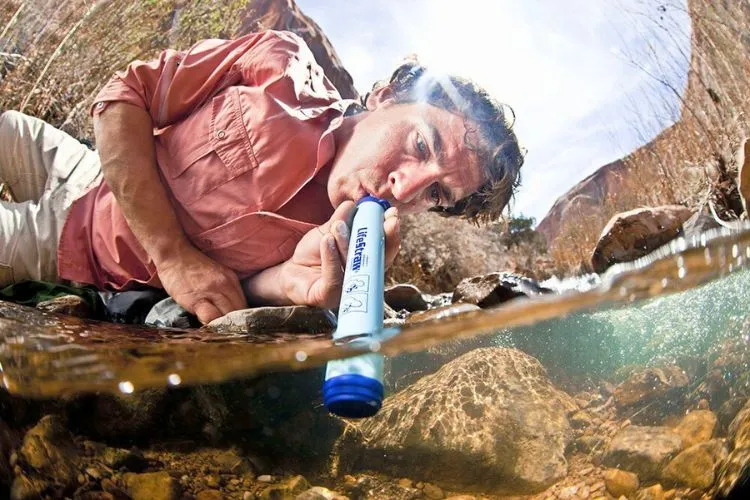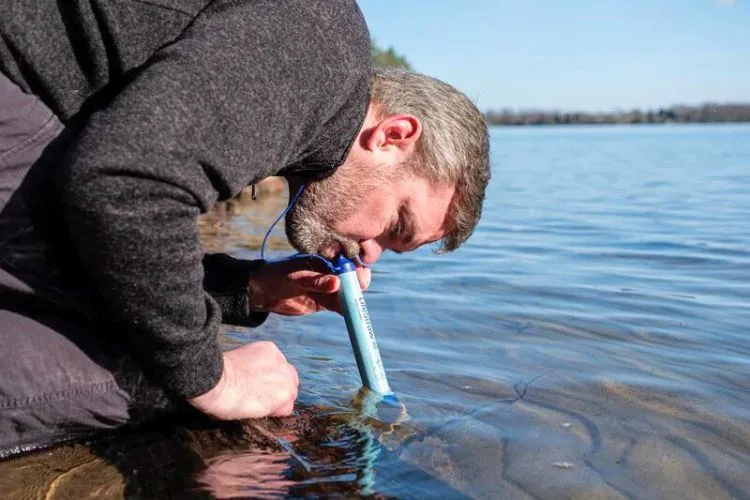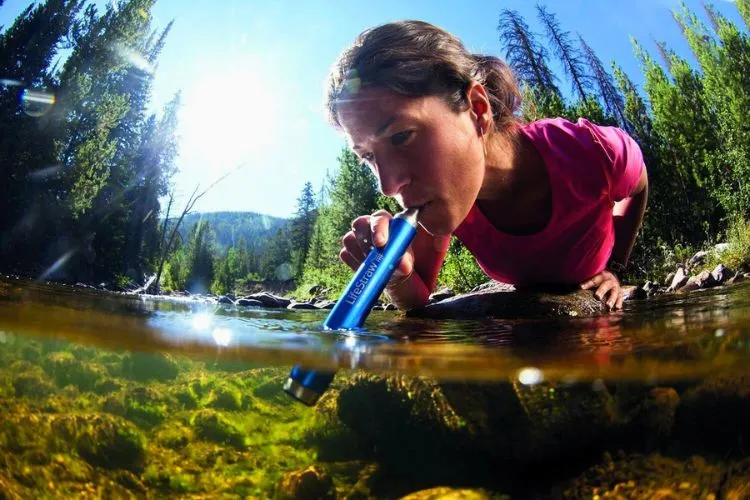Survival straws are compact, lightweight devices designed to filter water and provide safe drinking options in emergency situations.
When faced with natural disasters, camping trips, or any situation where clean water may be scarce, survival straws offer a convenient and portable solution.
But, do survival straws work for real?
In this article, we will explore the effectiveness of survival straws and delve into the science behind their filtration capabilities.

We’ll examine real-world tests, discuss key features and benefits, address common questions and concerns, and provide expert recommendations to help you make an informed decision.
do survival straws work?
Yes, survival straws are designed to work by filtering out impurities from natural water sources, making the filtered water safe for consumption.
These portable and lightweight devices utilize advanced filtration technologies, such as activated carbon and hollow fiber membranes, to remove a high percentage of bacteria, parasites, and other contaminants that may cause illness.
There have been several laboratory tests and evaluations conducted by reputable organizations, such as the Centers for Disease Control and Prevention (CDC), which support the effectiveness of survival straws in removing various impurities from water.
Moreover, numerous real-world experiences from hikers, adventurers, and individuals in emergency situations attest to the efficacy of survival straws in providing safe drinking water.
While personal experiences may vary and not all survival straws behave equally, the fundamental purpose of these devices is to filter water and reduce the risk of water-borne illnesses.
It’s important to note that survival straws should only be used as a temporary solution until a stable source of safe drinking water is secured.
How Survival Straws Work?
Survival straws function based on a simple yet effective filtration process. Within the compact device lies a series of filter layers that work together to remove impurities from water, making it safe for consumption.
The most common filtration technologies used in survival straws include activated carbon filters, hollow fiber membranes, and iodine treatments.

Activated carbon filters: These filters are highly effective in removing contaminants such as bacteria, protozoa, and unpleasant odors from the water. The porous nature of activated carbon allows it to trap impurities and improve the taste of the filtered water.
Hollow fiber membranes: These membranes have microscopic pores that block bacteria, parasites, and microplastics, providing a physical barrier to prevent them from passing through. Hollow fiber membranes are capable of filtering even the tiniest particles, ensuring clean and safe drinking water.
Iodine treatments: Some survival straws use iodine to kill viruses and bacteria present in the water. The water passes through the filter, which contains iodine-treated resin, effectively neutralizing harmful organisms.
Key Features and Benefits
Portability and ease of use: One of the main advantages of survival straws is their lightweight and compact design. They can easily fit into backpacks, emergency kits, or pockets, making them a convenient choice for outdoor activities and emergency preparedness.
Longevity and shelf life: Survival straws are designed to last for a considerable period without degradation. With proper care and maintenance, they can provide reliable filtration for hundreds, if not thousands, of liters of water.
Additionally, many survival straws come with built-in indicators or replaceable cartridges to ensure optimal performance over time.
Additional functionalities and accessories: Some survival straws offer extra features such as built-in compasses, signal whistles, or water storage options. These added functionalities can be valuable in survival situations where multiple tools may be needed.
What are the disadvantages of LifeStraw?
While LifeStraw has gained popularity for its portable and convenient water filtration capabilities, it’s important to consider some potential disadvantages of the product:

- Limited filtration capacity: LifeStraw has a finite filter capacity, typically ranging from 1,000 to 4,000 liters depending on the model. Once this capacity is reached, the filter is no longer effective and cannot be replaced or recharged, requiring a new LifeStraw to be purchased.
- Lack of effectiveness against chemicals and heavy metals: LifeStraw is primarily designed to remove bacteria and parasites from water sources. It may not effectively filter out chemical contaminants or heavy metals, such as chlorine, lead, or mercury. If these contaminants are a concern, additional water treatment methods might be necessary.
- Difficulty in filtering turbid water: LifeStraw’s filtration system works best with clear water. If the water source is turbid or cloudy, it may clog the filter more quickly and reduce its effectiveness. It’s recommended to pre-filter such water or consider alternative filtration methods.
- Suction required for use: LifeStraw requires suction to draw water through the filter, which can be tiresome for individuals with respiratory issues or limited lung capacity.
- Single-person use: LifeStraw is designed for individual use, which means it may not be suitable for filtering water for groups or families without multiple devices.
It’s essential to evaluate your specific needs and circumstances before relying solely on a LifeStraw or any other water filtration product. Considering these disadvantages can help you make an informed decision and explore other alternatives if necessary.
Expert Recommendations and Pro Tips
Proper usage and maintenance guidelines: To ensure the longevity and effectiveness of your survival straw, it is important to follow the manufacturer’s instructions.
Rinse the straw before first use and regularly clean the filters to remove any clogs or buildup. If your survival straw has a replaceable cartridge, be sure to replace it according to the recommended schedule.
Additional precautions for extreme environments: In extremely cold conditions, it is crucial to protect the survival straw from freezing, as this can damage the filters.
Keep the straw insulated or close to your body to prevent freezing. Additionally, in areas with potentially contaminated water sources, it is advisable to pre-filter the water using a cloth or a pre-filter attachment if available.
Alternative water sources and purification methods: While survival straws are effective in filtering water from natural sources, it is important to explore alternative water sources such as rainwater collection or carrying extra water containers.
Having multiple purification methods such as boiling or using water purification tablets can provide an added layer of protection in case of emergencies.
Frequently Asked Questions (FAQs)
Does the survival straw filter saltwater?
Survival straws are not designed to filter saltwater. They are most effective in filtering freshwater sources like rivers, lakes, and streams. Attempting to use a survival straw with saltwater may clog the filters and render them ineffective.
Can survival straws remove viruses too?
While survival straws can effectively filter out bacteria and parasites, they may not be able to remove viruses completely. However, survival straws that incorporate iodine treatments can neutralize some viruses, offering an additional layer of protection.
Do survival straws have an expiration date?
Survival straws typically have a shelf life of several years. However, it is essential to check the manufacturer’s guidelines for specific expiration dates or recommendations for replacing filter cartridges when necessary.
How does a survival straw compare to other water purification options?
Compared to other water purification methods such as boiling or using water purification tablets, survival straws provide a portable and instant solution. They eliminate the need for carrying bulky equipment or waiting for chemical treatments to take effect. However, it is always advisable to have multiple water purification options available in case of unforeseen circumstances.
Conclusion:
Survival straws have been proven to be effective in filtering water and providing safe drinking options during emergencies.
Their compact size, ease of use, and filtration capabilities make them a valuable tool for outdoor enthusiasts and individuals in need of clean water in emergency situations.
While survival straws may not be able to filter saltwater or completely eliminate viruses, they offer a convenient and reliable solution in most scenarios.
By understanding how survival straws work, considering their key features, and following expert recommendations, you can confidently include them in your emergency preparedness kit and ensure access to safe drinking water when it matters most.


